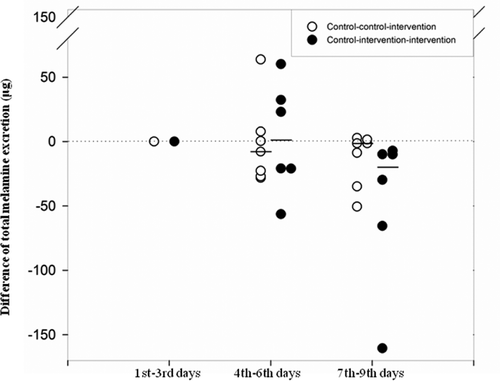A simple tableware switch could reduce exposure to a potentially harmful substance

In households with kids—or grown-up klutzes—a durable set of melamine plates and bowls is a must. But studies suggest that heat and acid can cause melamine from dinnerware to seep into food and potentially cause harmful health effects. Now scientists show that substituting stainless steel containers for melamine ones when serving hot food could reduce the amount of the substance in people's bodies. Their report appears in ACS' journal Environmental Science & Technology.
In 2008, the health effects of acute melamine exposure became widely known when a scandal erupted in China over the material's use in milk powder. About 300,000 people were sickened, and more than 50,000 babies were hospitalized. Although officials largely stamped out the practice of adding melamine to food, most people continue to be exposed to the substance, an industrial chemical also used in other plastics, flooring and whiteboards. Some research has suggested that even small amounts could increase the risk of urinary stones or kidney problems, and one major source of the material is tableware. Ming-Tsang Wu and colleagues wanted to see what kinds of practices could lower people's exposure.
The researchers first measured melamine levels in the urine of study subjects and then gave them stainless steel boxes and silverware for their hot meals. The melamine levels in their urine decreased after using the containers by 41 to 92 percent. The wide range could be due to subjects' exposure to other uncontrolled sources of the substance, the researchers say.
More information: Behavioral Intervention and Decreased Daily Melamine Exposure from Melamine Tableware, Environ. Sci. Technol., Article ASAP, DOI: 10.1021/acs.est.5b01965
Abstract
This study aims to examine whether behavior intervention can decrease total urinary melamine excretion. A total of 16 healthy subjects were recruited from two university buildings (eight subjects each). By using a stepped-wedge cluster randomized and controlled trial design, we randomly assigned eight subjects from the same building to the serial steps of either control–intervention–intervention or control–control–intervention. Each step lasted for 3 days. Subjects in the intervention step carried one bag containing stainless steel tableware as meal boxes and used them for each meal during the trial, whereas those in the control step carried one empty bag. The 24 h urine samples for 9 consecutive days were collected. In the control–intervention–intervention group, after excluding two subjects with missing data, the median absolute difference of the total 3 day melamine excretion between the seventh to the ninth day and from the first to the third day was −19.9 μg (a range from −160.6 to −7.2 μg, p = 0.028, n = 6). The median protection percent of the total 3 day melamine exposure (the amount from the seventh to the ninth day minus the amount from the first to the third day, divided by the amount from the first to the third day) was 68.4%, ranging from 41.8% to 91.8%. Regular use of stainless steel-made meals boxes can mitigate melamine exposure from melamine tableware.
Journal information: Environmental Science & Technology
Provided by American Chemical Society
















